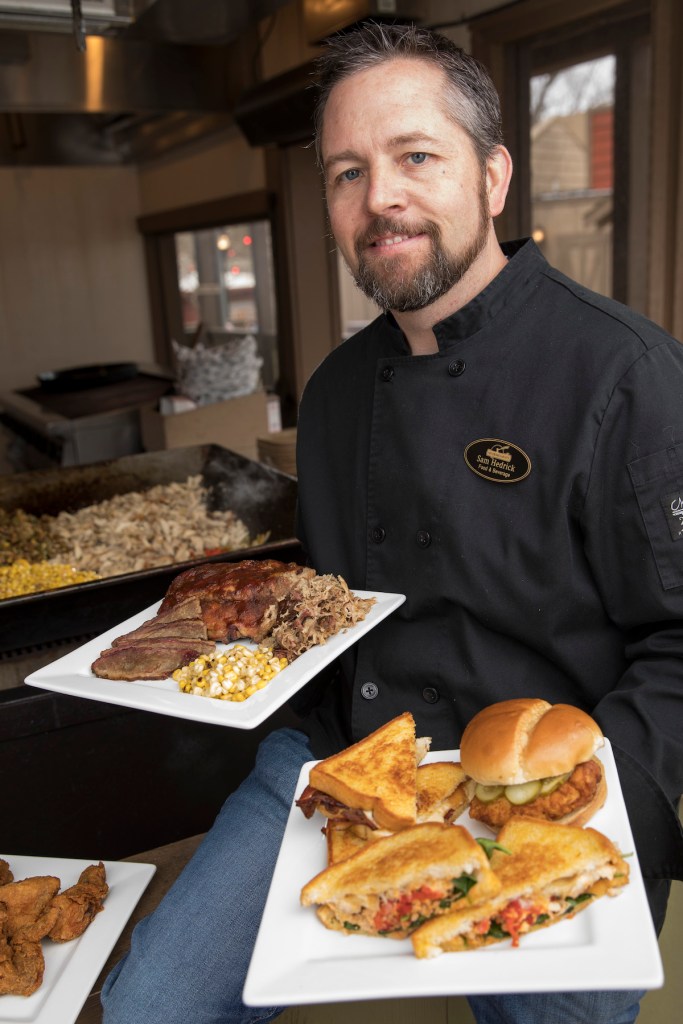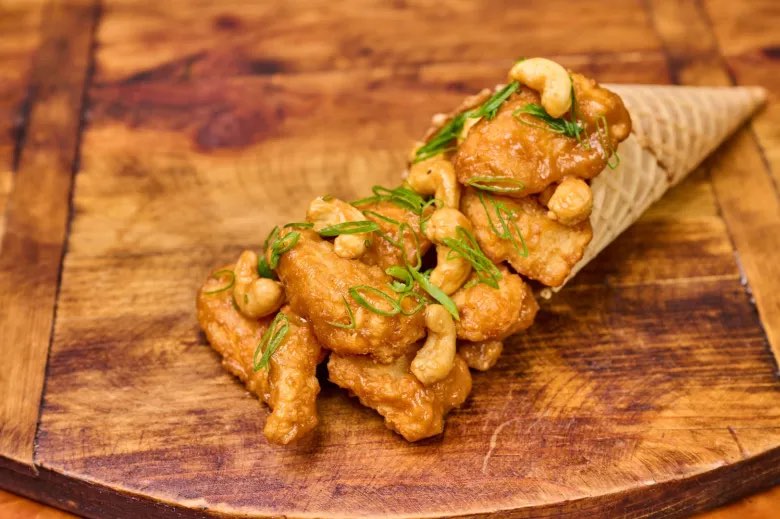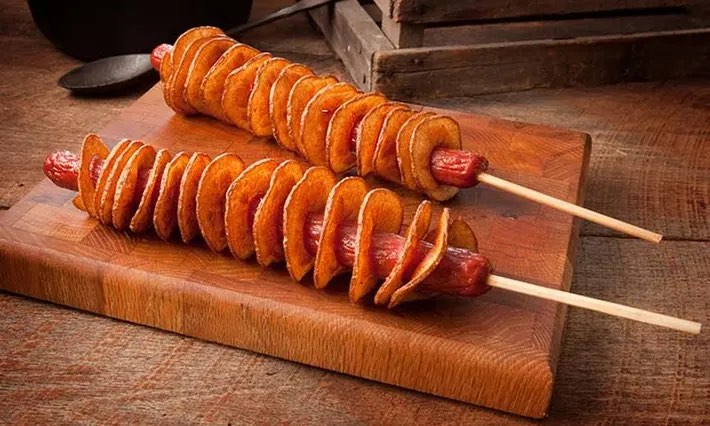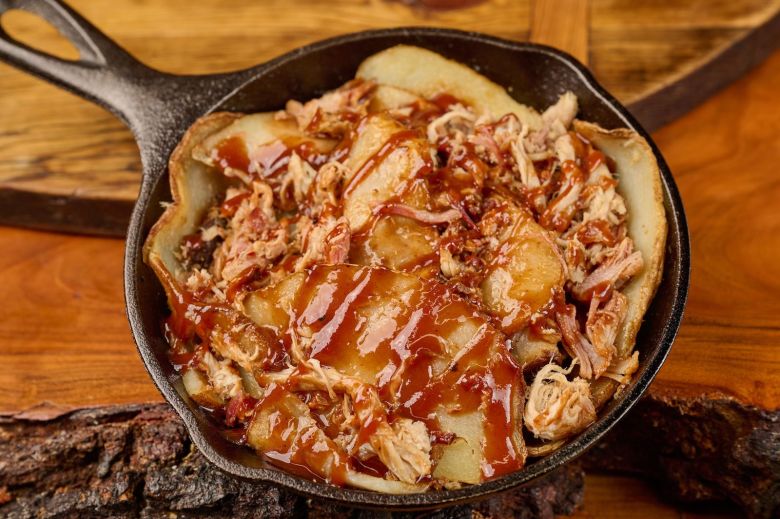Sam Hedrick landed his first job bussing tables at Silver Dollar City when he was 14. Two years later, he was promoted to cook.
For the next 30 years, Hedrick worked his way around the theme park and today is director of food and beverage. He’s the guy leading a nearly 400-person culinary staff responsible not only for serving over 1.5 million meals per year, but also dreaming up playful (and portable) dishes like the Tater Twist on a stick and Cashew Chicken in a waffle cone.
A Lebanon native, Hedrick’s mother and grandmother instilled in him a love of cooking.
While he has an associate’s degree in business from Ozarks Technical Community College, his culinary growth developed at Silver Dollar City. Hedrick says he learned much from former Chef R. Douglas (Moose) Zader. Hedrick talked to the Springfield Daily Citizen about what it’s like to be responsible for dining at the popular theme park.
Q&A: In the kitchen with Silver Dollar City’s Sam Hendrick

This interview was lightly edited for clarity and length.
Q: What are your overarching responsibilities?
I direct the day-to-day operations of all food services, including developing leadership, mentors, working with culinary teams, new menu items and menu strategies. We have four managers and five supervisors from various backgrounds. A lot are similar in that they worked their way up. It’s a fun, diverse group. We are coming up with new items and ways to make teams successful.
Q: There are lots of restaurants at the park. How does the structure work?
Each location has its own frontline leadership. We call them leads. The areas of the park are all divided amongst our culinary managers/supervisors. They are responsible for a section of the park. All those folks report to me. We work together as a group to fill voids and develop new items. We are very tight-knit.
Q: How many employees fall under you?
In peak season, 380. This year has been really good. We struggled the last few years with staffing, but we have recruited student workers, especially those interested in going into culinary service.
Q: What do you have to consider when developing new dishes?
The big thing is we have counter service or cafeteria-style service. So, we have to be able to deliver it in a fast way so that the guest is not spending a ton of time waiting for a dish. We try to have it just cooking so as the guest comes in line the food is coming off the grill. Food is continually made throughout the day.
What sets us apart is we want a unique food experience — like a Wildfire Burger — themed towards a ride or a festival. So guests have something that interests them and gets them excited. We look at our food as an attraction, like a roller coaster, and want our guests to look at it that way, as well. We take something classic and put a twist to it. For example, our cashew chicken cone has been a huge success. Instead of rice, it is served in a waffle cone (which also makes it easier to eat on the go). It is a familiar item, but unique and fun.

We also listen to guests at the park. One of the things Silver Dollar City has done well is draw ideas from frontline employees. The employees hear what guests like and don’t like. They are creative on their own rite.
Q: Do you have anything new for the Christmas festival this year?
We have a new apple dumpling and a new, even bigger Mountain cookie. Some of those iconic items have been reinvented.
Q: How long in advance are you working on menu items?
We are working right now on spring and barbecue festivals for 2025.
Q: How many new dishes do you release on average?
Between festival items and core products, we release about 45 new items a year. We look at what did well and what didn’t do well. We might put an item on hold. We might reinvent it. We try to hold onto signature items our guests expect.
Q: What’s a food item that was a success and one that flopped?
A huge success — and demand continues to increase — is Tater Twist on a stick. But it started as a flop. Guests didn’t know what they were. It wasn’t performing well. We believed in the product. Then we found the right person to promote it; sometimes you need the right person who talks to the guests. After we hired her, sales started growing. Then she came to us and was like, “I can cut these potatoes, take an apple core, punch a hole in it, put a hotdog in it, and make a hot dog twist.”
Demand for the Twisted Tater Dog is huge. Tater Twist struggled but we went back, thought about what are we not doing right, and ended up nailing it. Products that flop and never return, it usually comes down to communication. We don’t have too many items that flop at festivals because we started the Tasting Passport where guests can get multiple samples.

Q: Has the Tasting Passport been a success?
Tasting Passport has been a huge hit. We started it in 2021 with the spring festival, and we have inspired other properties in our company to adopt it. We have it for every festival now. It enables guests to try more food because they have five punches. So maybe they didn’t like the first dish, but they have four more punches, so they are more likely to try something new.
Q: What is your busiest time of year?
My (extended) family thinks “Oh, the park is closed in January, you must have a lot of time off” — but that is my busiest time. There is so much to do. We are recruiting staffing; [handling] visa worker programs.
Q: How many versions of a dish do you create before settling on one?
Usually, it is just two or three. Our folks have vetted those ideas out pretty well first. If it’s a new project like a restaurant, we will have a dozen or more. When we reimagined our barbecue restaurant, we had dozens of tastings. Myself and the corporate chef went to Texas for a week developing recipes on the equipment we were buying before we even built the restaurant. We did [research and development] trips. We were reinventing what barbecue was like at the park. We wanted to look at side dishes. They had to stand on their own. What is going to appeal to our customers?

Q: What type of travel do you do for work?
We go to conventions in Chicago. Go to other theme parks and see what is popular in an area or region. Several of us are going to Kings Island in Ohio in October for a trip. There is a lot to be learned through other parks: successes, failures, struggles. We have a great network within Herschend Family [Entertainment properties], but I have friends at numerous parks across the country that we collaborate with.
Q: How much do food trends influence what you do?
It’s interesting. We jump into food trends but it depends on what it is and where it is starting. Trends take a little longer to hit southwest Missouri. The challenge is we have to look at like: is the trend a food item that is conducive to something we can deliver effectively and consistently? Boba drinks have had a resurgence. We started serving some festival Boba drinks two years ago. Bursting Boba are conducive to lemonade, so we jumped on that. Our social media team helps us promote a new item. They have been phenomenal the past year.
Q: What’s the biggest challenge in your job?
[For] any person operating a business or restaurant, labor and staffing can be a big struggle. The post-pandemic struggles are not done with. They have largely stabilized but that doesn’t make everything better. We teach leading with love. That is the thing that we have always done well and made me successful. I am not just a boss that directs workflow. If our folks are struggling, our leadership usually comes in with a great amount of empathy. I have been here 32 seasons. There are easier jobs out there. Food service is a tough business. It’s demanding— has peaks and valleys. But all my leadership staff, the one who has been here the shortest time is 12 years. We build and trust in our relationships. Make sure they know they are valued.
Q: What excites you about your job?
I will walk the park and walk through the Smokehouse and see guests sitting there, everyone is smiling, and just seeing them satisfied. I want guests to be satisfied; to feel like it was worth the experience to enjoy their day with us.





